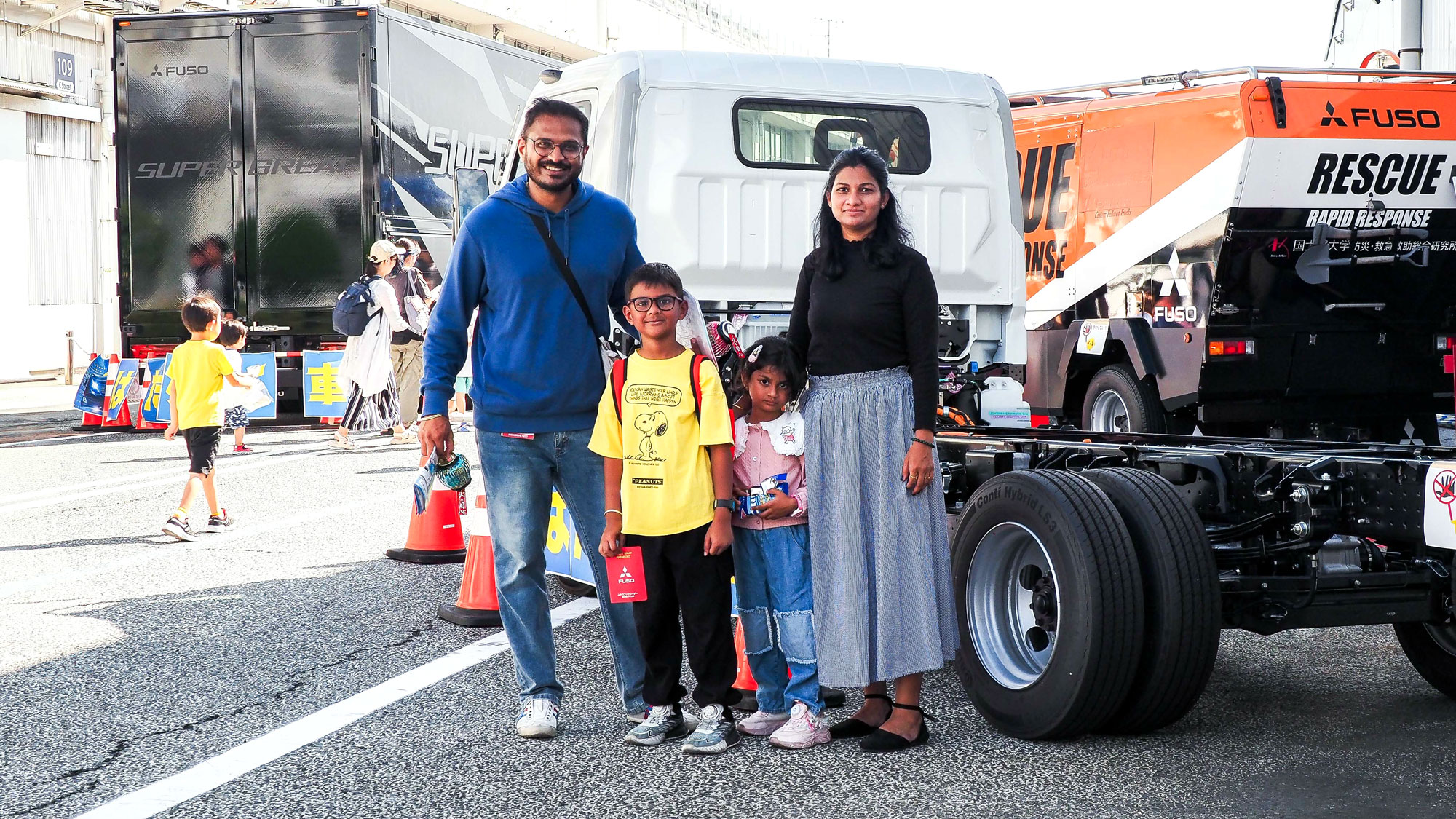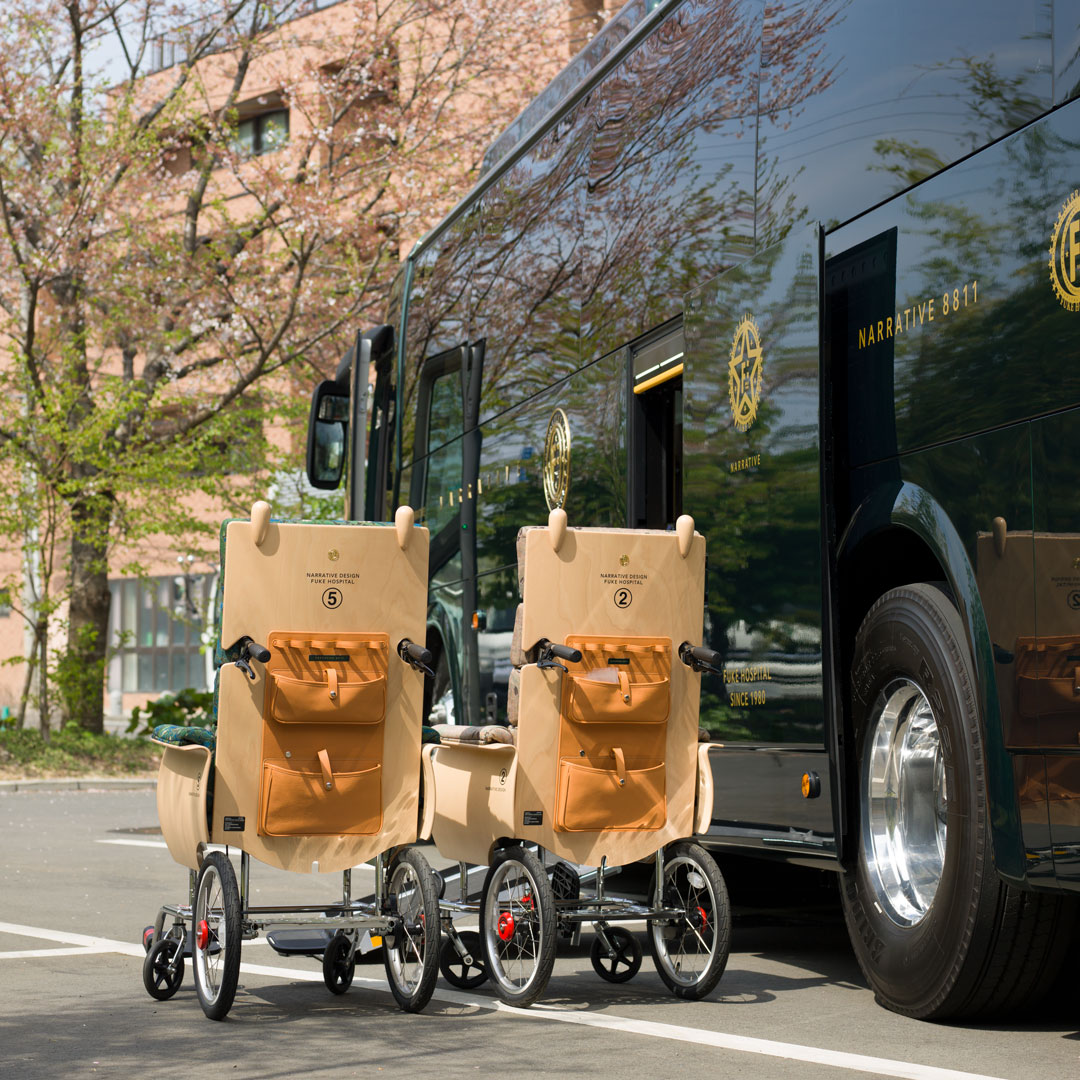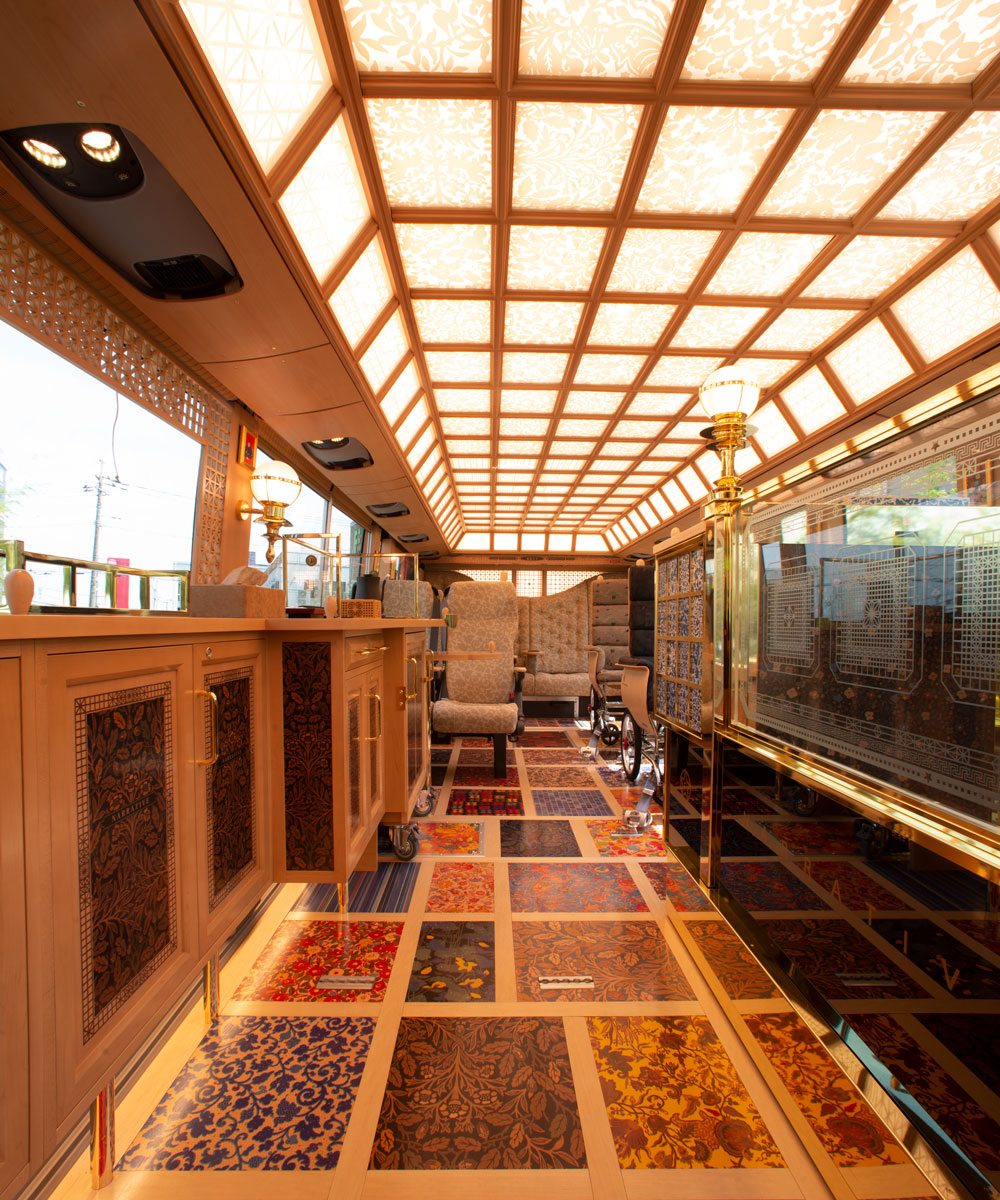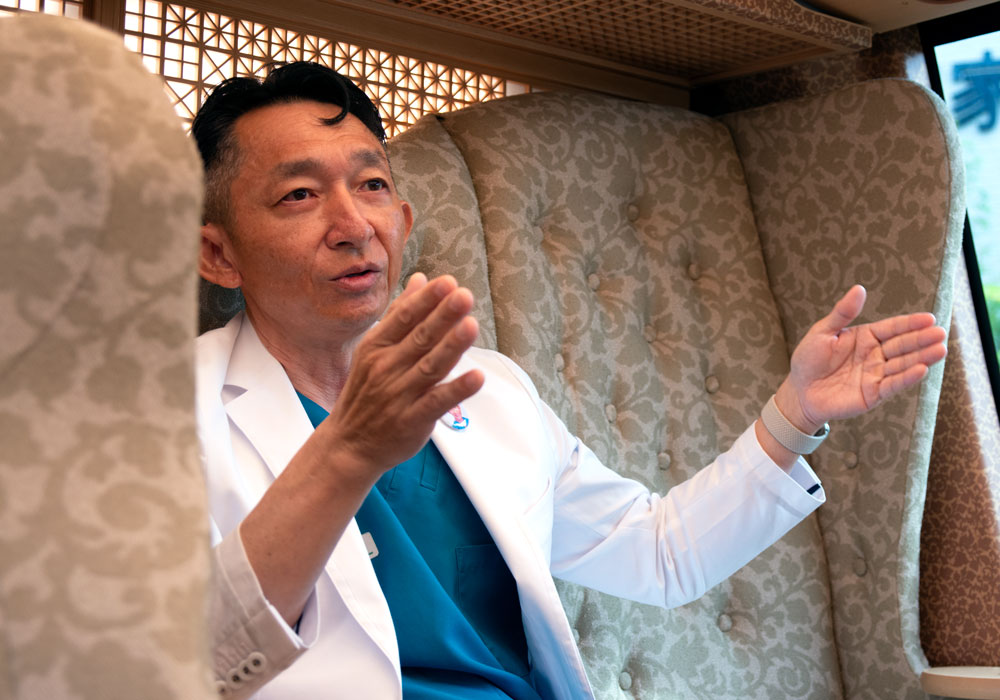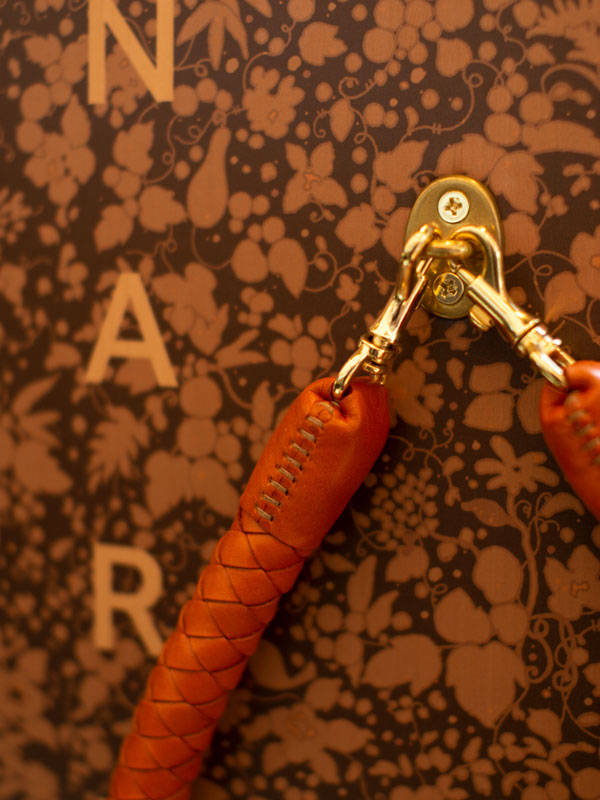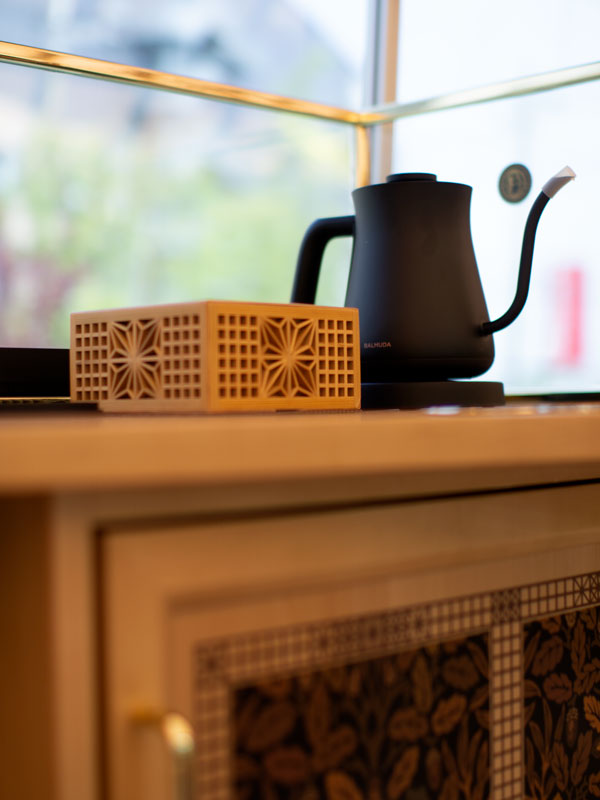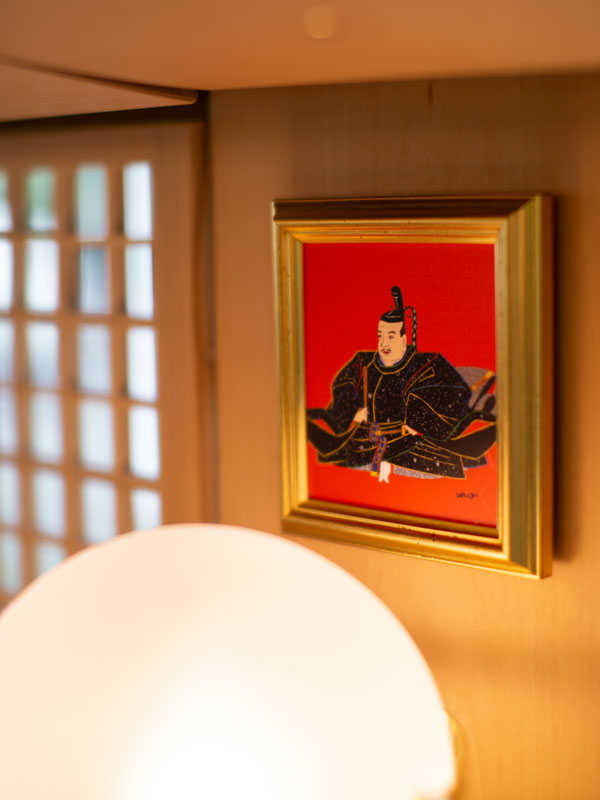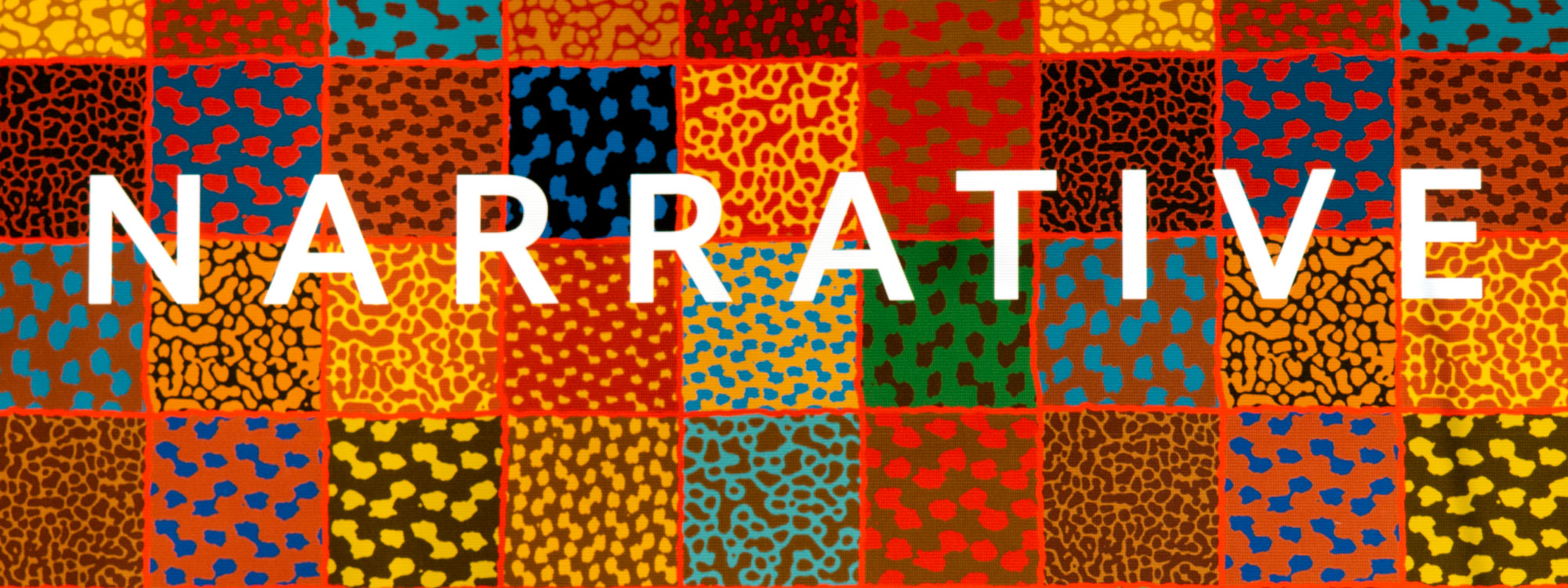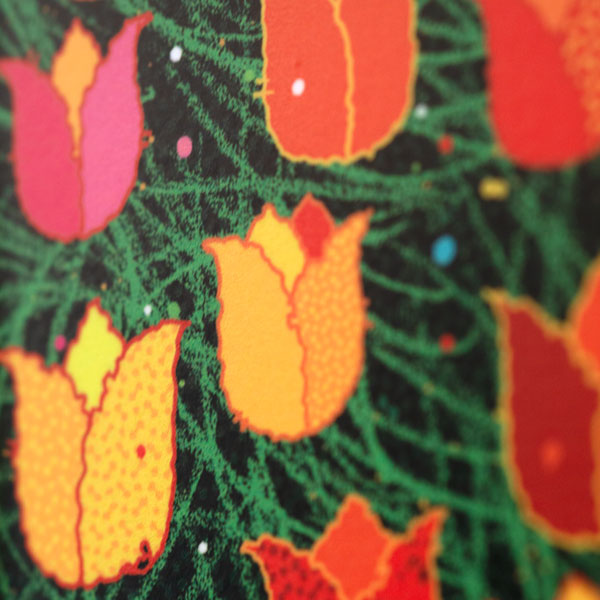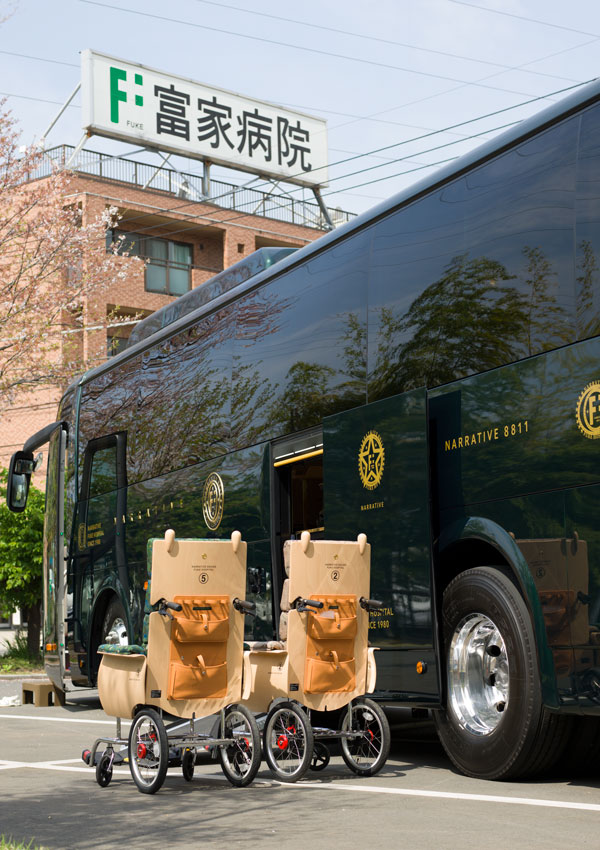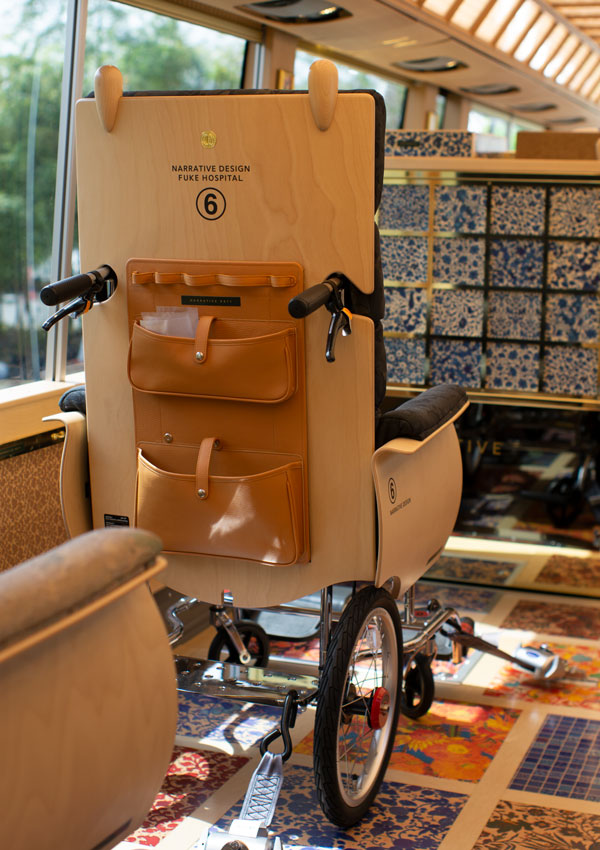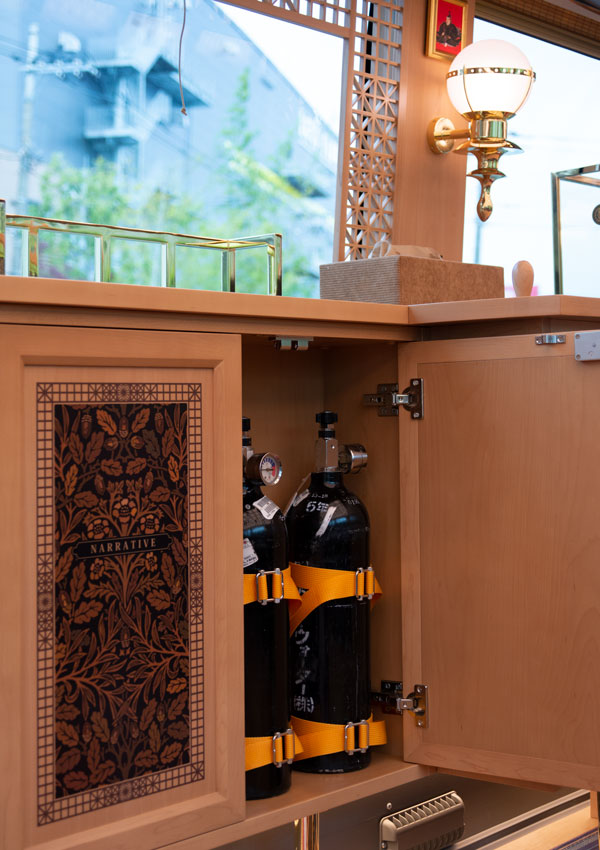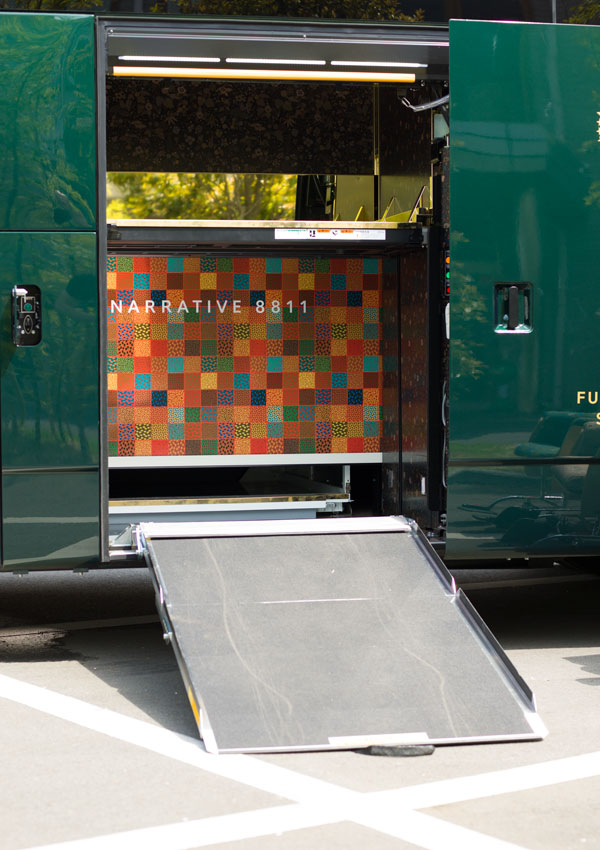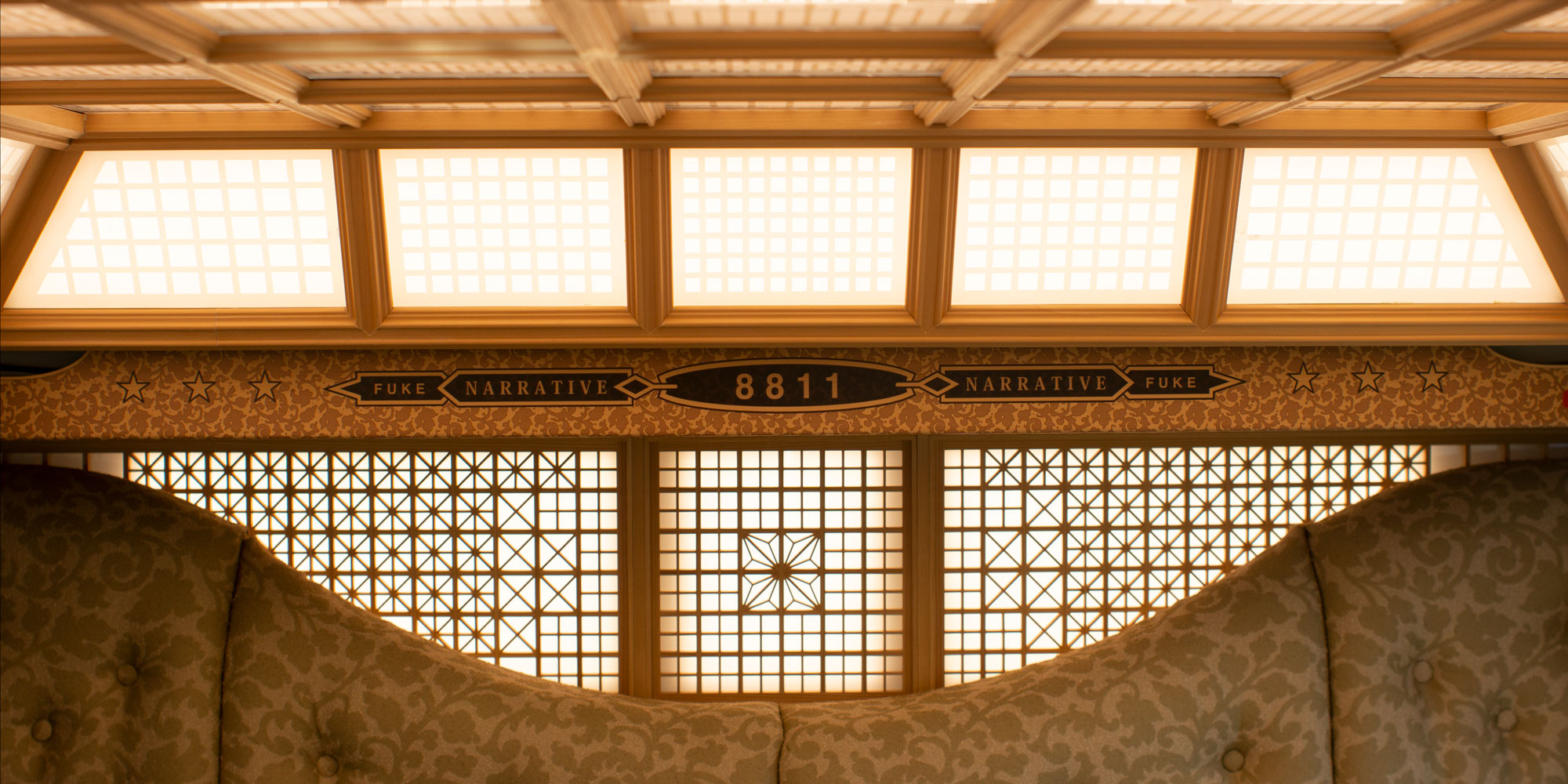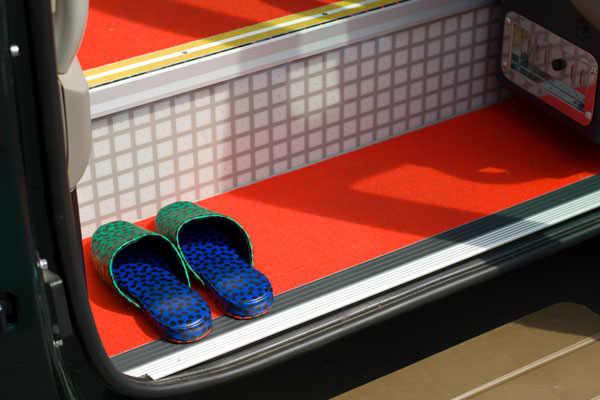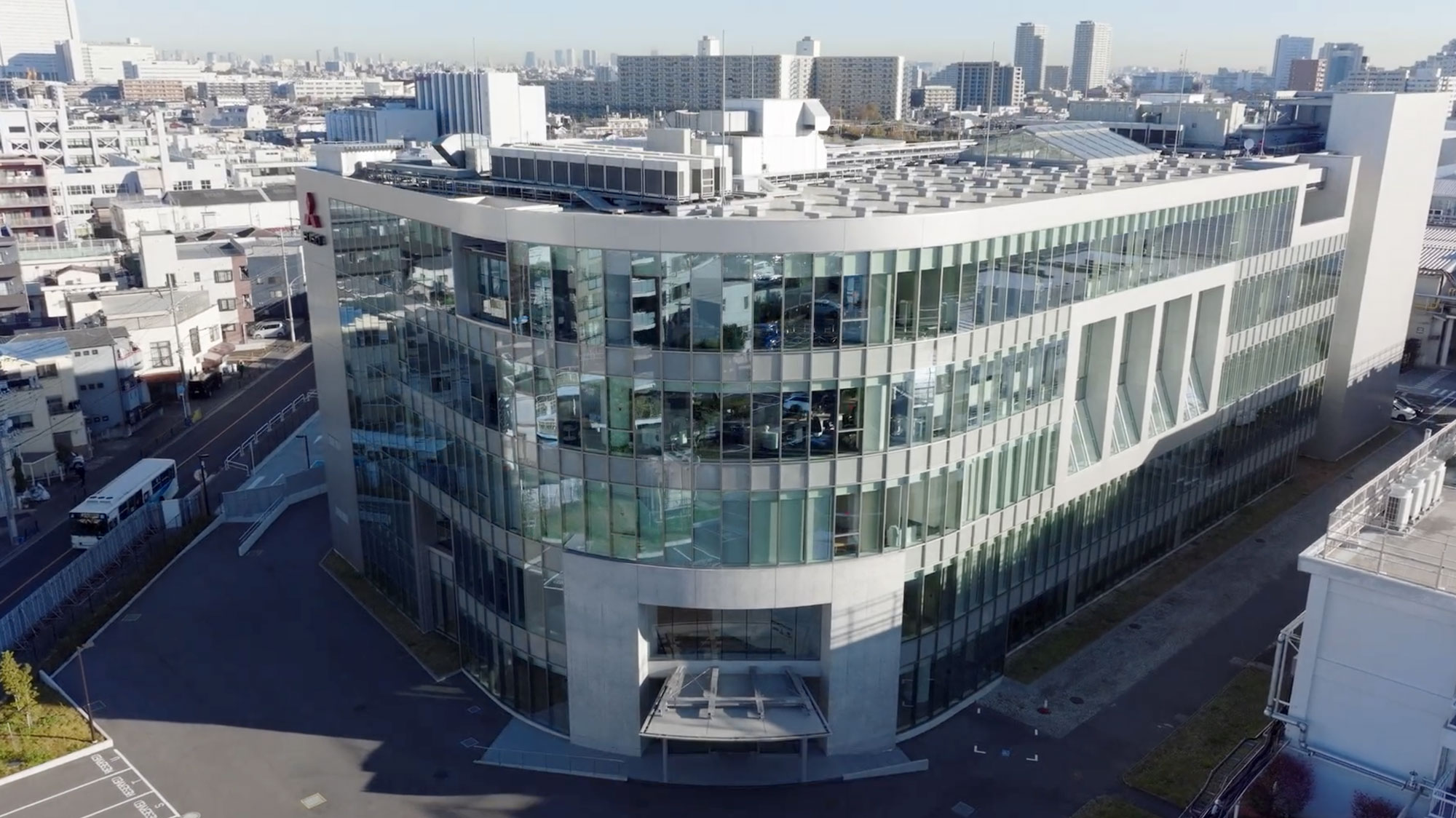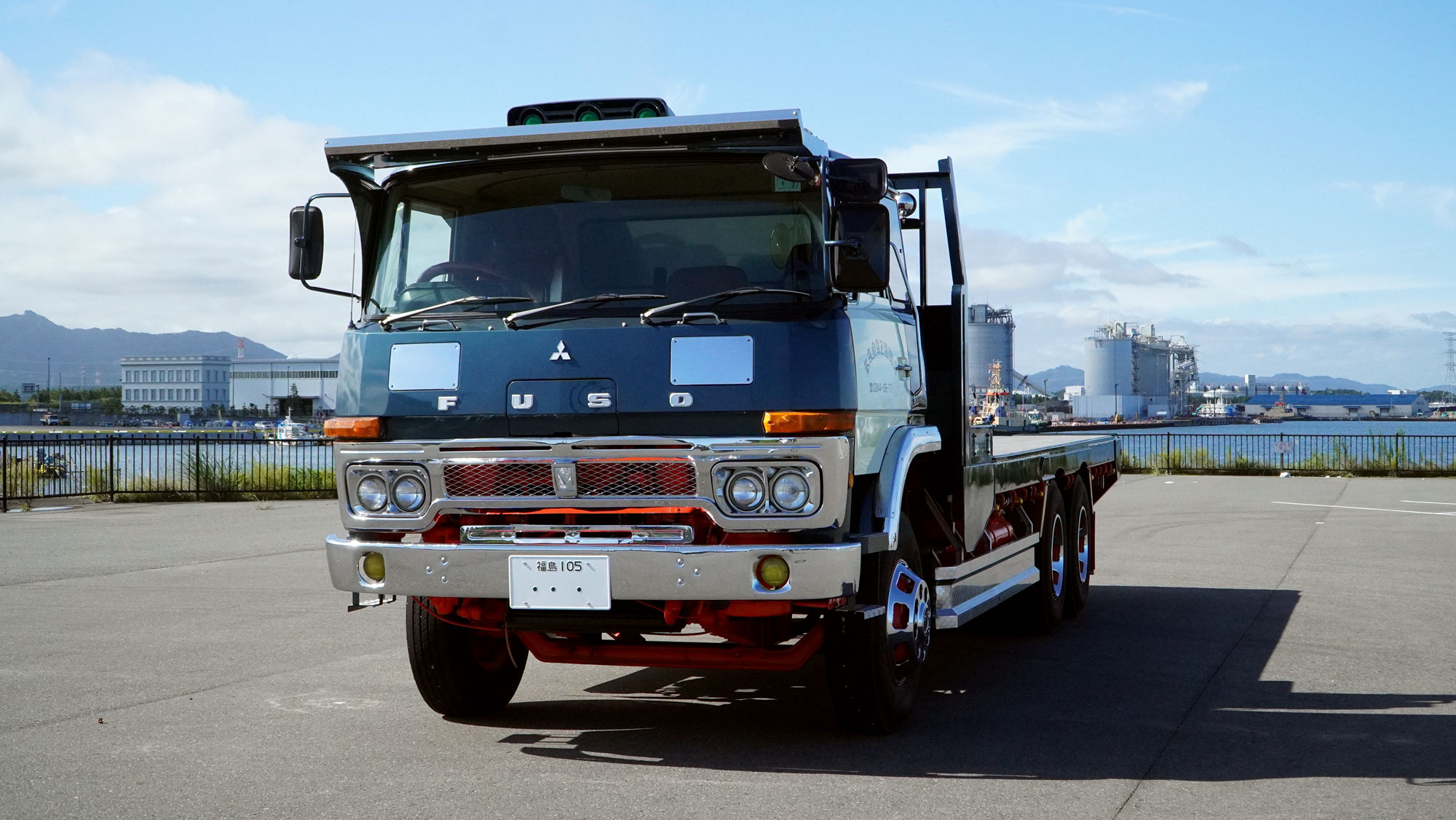FUNCTIONAL FEATURES In line with industrial design principles, the decorative aspects must align with the practical functionalities. The inclusion of a wheelchair elevator required some smart engineering. The space had to be carefully utilized to ensure patients could ascend and descend safely with a caregiver.
Power sockets are strategically placed to facilitate the utilization of patient support equipment, such as ventilation machines, while discreetly positioned oxygen tanks are conveniently stored in a cabinet for easy access when required. To enhance safety measures, wooden handholds have been thoughtfully placed throughout the bus, providing additional security for passengers.
Following its arrival in early 2023, the bus has become an integral part of the hospital’s “narrative” offerings. It has indeed created a buzz of excitement and anticipation among patients and their families. The bus is skillfully manned by a dedicated team of drivers, soon to be joined by a knowledgeable tour guide, all of whom will be donning custom uniforms designed by Mitooka himself.
Dr. Fuke’s vision is to provide severely chronically ill patients with disabilities and illnesses to witness the beauty of the changing seasons. Even if patients cannot walk, they can ride the bus in a wheelchair to view the vibrant cherry blossoms or the striking autumn foliage. While these experiences will undoubtedly leave a lasting imprint on the patients’ stories, the true essence of Narrative 1881’s impact lies in the captivating interior that intertwines seamlessly with the picturesque vistas beyond its windows.
